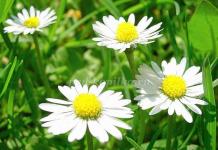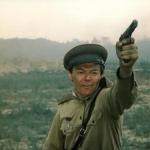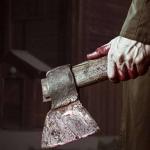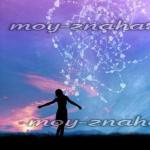Shumova Farida
Abstract of a lesson on teaching literacy in the senior group "Sound analysis of the word"
Purpose of the lesson:Continue learning the sound analysis of words; learn to distinguish between vowels, hard and soft consonants sounds.
Educational tasks:
1. Develop phonemic perception, auditory control over speech.
2. Learn to conduct sound analysis of the word. Acquaintance with sound analysis of the word SPIDER.
3. Strengthen the ability to distinguish between vowels and consonants sounds
4. Keep learning to name words with a given sound.
5. Contribute to maintaining the correct posture and positive emotional mood of children.
Development tasks:
Develop logical thinking, creative imagination, visual memory, fine motor skills
Develop coherent, expressive speech of children
Develop the ability to answer in full sentences.
Educational tasks:
Cultivate respect for adults, for each other
Cultivate those feelings How: mutual assistance, mutual assistance
Cultivate love for nature.
Creating an environment for organizing and conducting OD:
Phone with SMS
Projector, audio recordings, computer;
Chips denoting sounds
Ball, snowflake
Beanies sound guys
Package
Techniques for managing children's activities in OD:
1. Techniques for setting goals and motivating activities children: creating a problem situation; game situation.
2. Techniques for enhancing the activities of children in the process OD: conversation, questions for children, creation of a developing environment, analysis and conclusions.
3. Techniques for organizing practical activities children: artistic word; physical education minute "Winter", word sound analysis
4. Techniques for maintaining interest children: choice situation, planning, musical accompaniment, alternation of types of children's activities, slide show.
5. Appraisal and self-assessment techniques: activity analysis, encouragement, mutual assistance of children.
preliminary work:
Conversation "What is a parcel"
Getting to know grandfather Literate
Learning physical minutes "Winter"
Types of children's activities in OD:
Communicative.
Labor.
Productive.
Musical
Physical
Expected results:
Children's ability to act independently;
The manifestation of emotional responsiveness in activities and communication with adults and peers;
Education of moral qualities;
Activation vocabulary;
Formation of the ability to perform word sound analysis
Criteria for evaluating the activities of children on lesson
1. Actively participates in productive activities.
2. Shows independence.
3. Seeks help from adults and children and provides it to their peers.
4. Empathizes.
5. Reacts emotionally.
6. Subordinates motives.
7. Shows strong will.
8. Argues self-esteem.
9. The child enters into a discussion.
OD move:
1. Organizational moment.
The children enter the room.
(SMS message sound)
caregiver: SMS message received from grandfather Reader from the country ABVGDeyka. "Dear Guys senior group number 2 I want to send you a parcel, but I do not know your address. Call 907010 and give your address. Goodbye. Grandfather Literate from the country ABVGDeyka»
Guys, do you want to receive a package?
Then let's call and give your address (garden address)
I turn on the speakerphone, and you say your address in unison (Orenburg, 12v Gagarin Ave., Kindergarten No. 87)
2. The main part.
Guys, while the package is on the way, let's play. Let's play a game with you « Words backwards» (with a ball)
Winter summer
Friend-foe
Cheerful-sad
Kind angry
Long short
Handsome-ugly
Clean-dirty
High Low
run-stand
Shout - be silent
rejoice, grieve
(children sit on, facing the screen)
sound sounds of winter
caregiver: What the the sounds we hear? (slide number 2)
Children: This is winter
Sun: Right! winter landscape on screen
What words can we talk about winter? What is she? (we pass a snowflake and call descriptive words)
Children: snowy, cold, harsh, frosty ...
VOICE from the screen: (slide number 3) Hello guys! Parcel Grandfather Literate sent, but she got into my snowy possessions. I'll probably leave it to myself. Although... I will return it to you if you complete my tasks.
(one snowflake appears on the screen - 1 task. Slide number 4)
1. Articulation sounds: ZIMA wants to play teasers with you. Do you want to play?
Children: Yes! (Slide #5, #6)
Sun: I will show sounds, and you will voice them all together in chorus.
The wind plays with snowflakes - U-U-U-U
Breaks branches from a tree - I-I-I-I
Snowflakes fly in the wind - Oh-Oh-Oh-Oh
Right under the feet of the guys - A-A-A-A
A, O, U, I - what is this sounds? (go to the table)
Children: Vowels.
Sun Q: Why are they called that?
Children: They are easy, stretch, sing.
Sun: What color do we represent vowels sounds?
Children: Red.
(correct answer on slide 7)
Play: How many vowels sounds you know?
Sun: A sounds, which cannot be sung, what are they called?
Children: Consonants.
Sun: What are the consonants?
Children: Hard and soft.
Play: Solid consonants sounds what color do we represent?
Children: Blue
(slide 8)
caregiver: What color do we designate soft consonants?
Children: Green
(Slide 9)
Guys, who understood why Winter asks us questions about sounds?
(Yes, because winter has many different sounds: then, like a beast, she will howl, then she will cry like a child ... So she wanted to know more about sounds)
(Slide number 10 - the second task)
2. Game "Guess what sound?» (sitting at the table)
The teacher calls sounds, and the children show the necessary chips
caregiver:
(Slide number 10--11 - the third task)
3. Game « Elder and younger brothers» (with a ball) (We stand in a semicircle) (Slide #12, #13)
Look at the screen: The sounds took over. Why are they so friendly? Maybe they are relatives?
The teacher calls hard consonants, and the children call soft consonants "
PHYSMINUTKA: "Winter"
We play snowballs in winter, we play.
(imitation of making snowballs)
We walk through the snowdrifts, we walk.
(we walk, raising our knees high)
And on skis we run, we run.
(springy movements in place, wide swings of the arms, arms bent at the elbows)
Skating on ice we slide, we slide.
(smooth springy movements of the arm are bent at the elbows)
And we sculpt a snow maiden, we sculpt.
(corresponding movements)
We love the winter guest, we love.
(spread hands in bow and put on the belt)
4. name words starting with sound"With" (Slide number 15)
(Sit down at the tables)
5. Sound analysis of the word SPIDER. (Slide #17-23, #22 on click)
caregiver: Look at the patterns frost draws on the windows in winter. What do the patterns on the windows remind us of.
caregiver: What does the next pattern look like? (on the web)
caregiver: And who spins the web? (spider)
Complete ZIMA's next task word sound analysis"SPIDER"
How many sounds in that word?
Divide into syllables word spider. How many syllables are in this word? (2)
1 sound(P) Which? (accordingly, solid)
(blue)
name 2 sound. What is he? (A) (vowel)
What color chip will we place? (red)
Name the next sound. What is he? (y) (vowel)
What color chip will we place? (red)
Name the next sound. What is he? (To) (accordingly, solid)
How many sounds in that word? (4)
How many vowels sounds?
How many consonants sounds?
Pay attention to word SPIDER two vowels in a row sound. We performed for the first time today sound analysis of the word SPIDER
6. Game "Live sounds» (Slide number 24)
7. Guess the riddle and complete word sound analysis"WINTER"
I can't stand the heat:
I'll spin the blizzards
I will whitewash all the glades,
I will decorate the fir trees
I will notice with a snowball at home
Because I... (winter) (Slide number 25, 26)
Held sound analysis of the word yourself.
Guys, WINTER asks us to make a proposal with the word WINTER.
.Educator: -Guys, do you like winter?
Let's give a verse to Zimushka (poem)
We will fight in the snow
We love to ride down the mountain
And so we are very
I really like WINTER!
Final part:
caregiver: -You completed all the tasks of Zimushka.
(WINTER appears on the screen)
WINTER: (Slide number 27)- Thank you for the poem. Well, guys, you completed my tasks. And I learned a lot about sounds. I am glad that I met such interesting guys like you. The parcel addressed to you has probably already arrived. See you soon!
caregiver: She does not say goodbye to us, but tells us "Goodbye" We will meet with her every day.
Educator: - While the parcel is being carried to us ...
TOTAL: caregiver: Get in a circle and remember:
Who sent us a text message?
What did Grandpa send us? literate?
Did we receive the package right away? Why?
We coped with the tasks of WINTER?
You are smart, spoke confidently, correctly, in full sentences
(Pick up the parcel). Children's emotions.
Target:
To consolidate the ability to conduct sound analysis of words, qualitatively characterize sounds;
To consolidate knowledge about the semantic role of sound;
Learn to compare words by sound composition;
Continue learning, find words with a given sound.
Material:
1) Demo:
board
pointer
5 sound scheme
red, blue, green chips
pictures (mice, bears, foxes, bows)
train
models of words - names of pictures.
2) Distribution:
5 sound schemes
Red, blue, green chips
Lesson progress:
I. Game moment: "Train travel to the land of sounds and words"
Guys, today you will all be passengers, and we are going on this train on a journey to the "land of sounds and words." Is everyone ready to travel? Has anyone left the train? Train departs.
First stop "Sound"
“Children, you know that people communicate with words, and words are made up of sounds. Let's remember what sounds are? (children answer)
Questions:
What sounds are called vowels?
Who can name the vowel sounds? (enumeration)
Think of words that begin with a vowel sound. (examples of children)
What sounds are called consonants?
Name consonant sounds.
Think of words that begin with a consonant sound.
Well done! Now, guys, guess the riddle.
Riddle about the fox:
"Dwells in the forest,
He eats game, but climbs into the chicken coop,
It is called a cunning beast "(showing pictures)
What is the first sound in this word? (children's answers)
Now listen to another riddle. Riddle about onions:
“Grandfather is sitting, dressed in a hundred fur coats,
Who undresses him
He sheds tears"
What is the first sound in this word? (hard consonant)
I will invite the children to come up with first words that begin with a soft consonant sound, and then with a hard consonant. (examples of children)
Well done! So we remembered that sounds are soft and hard consonants.
II. Well, now our journey continues.
Next stop: Word Station
Guys, we pronounce many different words for the whole day, and one word was hidden at this stop. And guess what, guessing my riddle. Mouse riddle:
"Little ball
Fumbling under the shelf"
Who is this riddle about? (children's answers)
Correct, about the mouse, and now let's look for the sounds that live in this word.
Sound analysis of the word: "mouse"
At the blackboard, the word is parsed by 5 alternately called people. The rest of the children work locally.
Questions:
How many sounds are there in a word?
How many sounds are there in a word?
How many consonants? Name them.
How many vowels? Name them.
How many syllables are in this word? Divide the word into syllables.
I will invite the children to name words that can be divided into 2 syllables. (examples of children) Playing with sounds. Next, I suggest that the children compare the words "Mouse" and "bear" in terms of sound composition. I propose to identify the same sounds in words and different ones.
Questions:
Name the same sounds in words.
Name different sounds. (children's answers)
Self-analysis of the word: "bear" in the field (In secret)
Something you and I sat up and it's time to relax. And here is the next stop on our way: "Sportivnaya". (physical minute: the mouse gives tasks to children)
III. Our journey continues and next stop: "Guess"
Children, it happens in life that not all people can pronounce sounds correctly, so the words are wrong (with errors). It is necessary to pronounce one sound incorrectly and the word turns out to be different. I will now read to you a poem in which "the sound has gone astray." And here's the sound, guess for yourself. Reading a poem:
"Snow sings, streams run,
Doctors sit on the branches?
Questions:
What sound got lost?
What is the right way to say it?
Correct reading of the poem by children.
Work with models and subject pictures at the blackboard.
Guys, our journey is coming to an end and the last stop: "Play"
The game is being played: "Shop".
You have come to the grocery store. You can buy those of them in the names of which there is a sound "C", and then "C *". What will you buy? (children's answer) for each correctly named word, a chip is given. With this our journey came to an end.
Electronic manual for consolidating the skill of sound analysis of words
A guide to teaching literacy for children 5-6 years old. Fox's birthday
Kovalskikh Tatyana Alexandrovna, speech therapist of the MADOU "Kindergarten No. 77", BereznikiDescription of work: The electronic manual was created in Microsoft PowerPoint. It can be used in frontal, subgroup and individual lessons with older preschool children. Designed for children who have an idea about the sound analysis of words and who have the skills to compose sound patterns of simple words. In addition, this manual can be used when teaching kids to read. The manual will be useful for parents as an assistant for opening the world of sounds and letters to children.
Basic goal
is to consolidate the skills of sound analysis and synthesis of words, teaching literacy.
The guide helps you to: tasks
:
- Strengthen the skills of sound analysis and synthesis.
- Learn to identify the presence of a certain sound in a word.
- Learn to name sounds in a word in order.
- Improve the ability to characterize sounds.
- Develop auditory attention.
- Develop visual gnosis and praxis.
- Cultivate independence and patience in completing tasks.
Teaching preschoolers the skills of sound-syllabic analysis and synthesis is a rather complex and lengthy process. This is an important part of literacy education. It takes a lot of time in the educational process. The quality of the work done in the future will have a great impact on the success of the child in the Russian language at school. The lack or absence of the necessary skills will inevitably lead to dysgraphia and other learning difficulties due to the lack of skills in phonemic analysis and word synthesis.
A game "Fox's Birthday"
will help make classes interesting, exciting and unique. It's no secret that if a child has a desire and likes to study, then the result will be much higher. A variety of game material will help maintain the interest of children in the classroom, reduce fatigue, increase the efficiency and quality of work.
The presentation was created taking into account the basic didactic principles. The material is given in a playful way, the tasks are built with gradual complication, and are based on the repetition of previously studied material. So, the pictures for the sound analysis of words are repeated, and the scheme itself appears on each slide a new one. The child focuses on what words he has already guessed and analyzes new pictures. If the answer is not correct, an animation effect appears, but the picture does not disappear, which allows the child to see his mistake and look for the correct answer.
There are different options for using educational material: with or without reading words. This gives the teacher the opportunity to vary tasks, taking into account the level of development of children and their individual abilities.
All educational material is based on a fairy tale plot. The animals celebrate their birthday. However, the child must guess whose birthday it is.
A closed gift box appears on the slide.

Animals appear on the slide, according to the word scheme, the child finds the correct answer FOX

If the answer is correct, a fox appears with a large festive bow and a beautiful box.
- What's in this box?
- Present. The guests brought them.

Further, each next slide makes the child answer the question of what they gave the fox for his birthday. The children are especially interested in how the fox gradually accepts treats and tries on all the gifts.
CAKE

A cake appears, then we check, we read the word.

BEADS

The fox puts on beads, check, read the word.
The word PORRIDGE

The last scheme is the most difficult. We draw the attention of the children that two words fit this scheme at once.
FLOWERS,
HAT

Flowers appear, the fox puts on a hat.

We check and read the words.
After the gift box is sorted, the fox invites guests to the festive table.
- Who came to visit the fox?
Children, according to the schemes of words, recall the beginning of a fairy tale story and name the animals. A lion, an elephant and an elk appear on the slide.

I would like to draw attention to the difficulty in the sound analysis of the last word (elk), where it is necessary to draw the attention of children and remember that the soft sign of the sound does not indicate, therefore, the cell is not painted over.
In the end, I will remind parents and children Basic Rules :
We hear and pronounce sounds, and we see and write letters.
Children must remember that Russian has only six vowels.
How do we represent sounds?
red - vowel sounds;
blue - solid consonants;
green - soft consonants.
The whole game passes quickly, does not tire preschoolers. remember, that A child can only spend a few minutes in front of a computer. Take care of the health of our children!
Play with pleasure! Positive emotions and patience will help you cope even with a very difficult task.
I wish you success!
Presentation on the topic: Forming the skills of sound analysis of words in children of senior preschool age
Abstract of a lesson on teaching literacy in the senior group for children with OPFR "Sound and syllabic analysis of the word"
To teach preschoolers to determine the presence of a given sound and its place in a word; exercise in dividing words into syllables; continue to teach children to distinguish and correctly use the terms "sound", "letter", "syllable", "word"; continue to acquaint children with letters; learn to read syllables; to consolidate the ability to write capital letters.
Tasks: to teach preschoolers to determine the presence of a given sound and its place in a word; exercise in dividing words into syllables; continue to teach children to distinguish and correctly use the terms "sound", "letter", "syllable", "word"; continue to acquaint children with letters; learn to read syllables; consolidate the ability to write capital letters; consolidate knowledge about the word-distinctive role of sound; develop phonemic perception, auditory control over speech; develop mental processes: auditory and visual perception, memory, attention; mental operations - analysis, synthesis, generalization; to cultivate endurance, the ability to listen and hear each other, not to interrupt a friend.
Equipment: "sound house"; sound cards; cards with the image of a "fox" for sound analysis; task cards (3 types); toys and objects: ball, car, tape recorder, gnome, hedgehog, dog, hare, mouse; "Portrait" Dunno in a frame; simple pencils; individual sets with chips for the sound analysis of words.
Lesson progress
Educator (V.). Guys, today we will play with words. And we will play the game "Echo". I will pronounce the words, and you repeat after me only the first sound: whale, cat, sled, needle, alphabet, varnish, scissors.
Well done! And now I will pronounce the words, and you repeat only the last sound after me: whale, cat, sled, needle, alphabet, varnish, scissors.
Stranger enters.
Dunno. And I want too! May I come with you?
Q. Dunno, we have unusual games, but smart ones, with words. Do you know what sounds and letters are?
Dunno. I know! There are sounds when you play the trumpet. They are so loud! And the letters are probably buns so big and tasty.
B. And that's wrong. Who taught you this?
Dunno. Nobody taught me. I want to learn, so I came to you.
Q. Guys, let's tell Dunno everything we know about sounds. What are they? (Vowels and consonants.) What vowel sounds do we know? (Ah, oh, y, s, and, uh ...). Why are they called that? (Show symbols of vowel sounds.) What are consonant sounds? (Deaf and voiced.)
Why are they called that? Repeat after me the following sounds: [p, f, t, k, s, sh]. What are these sounds? (They show symbols.) Repeat the following sounds after me: [b, c, e, d, h, g]. What are these sounds? (Show symbols.) And what other consonant sounds are there? (Soft and hard.) Let's play the game "Name a couple." I will call a hard sound, and you call me a paired soft sound (the game is played with a ball).
Dunno plays this game with children and gives wrong answers, children correct him.
Dunno. This is bad game. Let's play with the pictures I brought.
Q. Please show me your pictures. A very interesting task: the names of which objects begin with one sound. You need to connect these pictures with lines.
Children and Dunno perform the task.
Q. Guys, let's check how Dunno coped with this task (check Dunno's work and correct mistakes).
V. Well done! Now guess the riddle.
cunning cheat,
red head,
A fluffy tail is a beauty.
Who is this? (Fox.)
Right. And let's show Dunno how we can parse a word by sounds.
(A sound analysis of the word "fox" is being carried out.)
The teacher suggests pronouncing this word so that everyone hears the first sound well. Then he asks what sound it is (consonant, soft) and what chip can be used to designate it (green). The rest of the sounds are analyzed in the same way. The scheme of the word is laid out on the board and at the same time work is underway at the tables.
Dunno. Thanks for teaching. Now I myself can divide the word into sounds. See. Hand. Hand. Right?
Children. No, not right. You divided the word into syllables.
V. Dunno, imagine that a word is a house for sounds, and syllables are rooms in this house. The most important sound in a syllable is ... (children finish - “vowel”). It is he who creates the syllable. The guys and I will show you how sounds are friends and how syllables are obtained. Let's play with live sounds.
Distribution of roles: children become sounds - [b, a, o, y, s, and]. The child (sound b) puts vowel sounds in turn on the petals of a flower, pronouncing the syllables that are obtained (ba, boo, bo, by, bi).
Dunno. Oh, how interesting! Can I try? Can I be the sound [m]?
Dunno. Remembered! I have more pictures! But I don't know what to do with them.
Q. Show the guys, maybe we can figure it out together? Dunno takes out cards with images of a watermelon, a drum, a beetle, a bucket, a butterfly, a pear, and under them circles are arranged in a row. You need to complete the following task: name what is shown, and paint over as many circles as there are syllables in this word.
V. Well done, Dunno. And now, guys, and you, Dunno, listen to the poem and be very careful, in some words the sounds got lost. Guess what sounds need to be returned to their rightful place, name the words that, in your opinion, should be in the poem.
It is not known how it happened
Only the letter got lost:
Jumped into someone's house
And hosts it!
But as soon as I entered
mischievous letter,
very strange things
Started to happen...
They say one fisherman
I fished out a shoe in the river.
But then he
Hooked house (catfish)!
I sewed a shirt for a bump (bear),
I'll sew him pants.
Q. Alright guys, you've put the sounds back in the right place. Dunno. Well, I have already learned to read. I see a picture and read a word.
Q. And if there is no picture, how will you read it? Guys, tell Dunno what you need to know in order to be able to read. (Letters.) We already know many letters. Therefore, let's remember the task: it is necessary to insert a missing letter into the scheme.
Dunno (sitting saddened). I realized that I still had to go to school. I will go to study.
C. Wait, Dunno, the children want to give you a toy as a souvenir, but you have to guess it: there is a sound [m] in the name of this toy. (Children help to choose toys whose names contain the sound [m]: tape recorder, car, gnome, mouse.) The name of this toy consists of three syllables. Dunno. Car.
V. Well done, Dunno. You guys are also great, taught Dunno to divide words into syllables.
Dunno. Thanks guys, now I know what a sound is and what a syllable is. I even remember some of the letters. And you are all great.
Abstract of a lesson on teaching literacy on the topic "Forest". Senior group
Material Description: I offer you a summary of direct educational activities in the senior group (5-6 years old) on the topic "Forest". This material will be useful to teachers of preschool education of older groups. This summary of the lesson is aimed at developing the ability to conduct a sound analysis of words and conduct a graphic recording of a sentence.Integration of educational areas: "Cognition", "Communication", "Socialization".
Program tasks:
1. To form the ability to conduct a sound analysis of words;
2. To form the ability to conduct a graphical recording of the proposal;
3. Develop and improve the phonemic hearing of children;
4. Expand children's ideas about the world around them;
5. Cultivate respect for nature.
Equipment: forest illustration; subject pictures of animals; chips; word schemes; 2 houses with pockets; graphic scheme of the offer; hoops.
Vocabulary work: fox.
Preliminary work: viewing illustrations depicting wild and domestic animals.
Lesson progress
1. Organizational momentEducator: Today we have guests, let's introduce ourselves to them. Each of you will say your name and highlight the first sound that your name begins with.
2. Communication of the topic and purpose of the lesson
Educator: What is the name of our activity? What do we do in literacy? Do we need literacy in life? For what?
Educator: Today we will play and perform various exercises, for your work you will receive chips, and in the end you will calculate who earned how much.
3. Phonetic charging
- Listen to music. (music of the forest)
Where can all these sounds be heard? What is a forest? (Illustration display).
- Who lives in the forest? What can be heard in the forest? Let's remember the forest sounds and denote them with chips. How does a strong wind blow?
- What chip will denote the sound? How are the leaves on the trees?
- How do bugs buzz? (W-w-w)
- And how do little mosquitoes ring? (Z-z-z)
4. Sound analysis of the word "fox"
Educator: Now listen to the riddle about one forest dweller:
cunning cheat,
red head
Fluffy tail - beauty,
Who is this? (Fox.)
Educator: Let's divide the word "fox" into syllables. How many syllables? (2)
Educator: Let's say a word. Which syllable is pronounced with more force? Name the first syllable. What was the first sound you heard? Let's mark it with a chip.
Children lay out the scheme of the word "fox".
Educator: How many sounds are there? How many vowels are there? Consonants?
5. Physical education for the eyes
6. Graphical record of the proposal
caregiver: Let's make a sentence about the fox and write it down using the diagram. (Children offer various options and write sentence patterns).
Educator: Who is a fox? What animal is this? Why? What wild animals do you know?
7. Didactic game "What is it?"
Educator: In the forest it might be green. What is this? (Leaves, grass, grasshopper, frog, spruce.)
Educator: In the forest it can be long. What is this? (Snake, caterpillar, forest path.)
caregiver: In the forest, it can be fast. What is this? (Hare, bird, squirrel.)
caregiver: In the forest it can be dangerous. What is this? (Snake, bear, poisonous mushrooms.)
8. Physical education
Educator: Let's play and relax in the forest clearing. The game is called Make No Mistakes. Now the music will sound, and you must run around the hoops, in which there are pictures with animals, to the music, if the animal depicted in the picture lives in the forest, you run into the hoop at the end of the music, if not, then you are out of the game. (Play 2 times) (Pictures of wild and domestic animals).
9. The game "Find a house for the animal"
Educator: You know that many wild animals live in the forest. Let's play the game "Find a house for the animal." (Visibility of 2 houses: with one and two pocket windows). If there is one syllable in the name of the animal, then we settle in a house with one window, if there are two syllables, then in a house with two windows. Pictures: mouse, wolf, bear, fox, squirrel.
10. Summary of the lesson
Educator: What did we do today? What did you like the most? What did you do well? And what caused difficulties? Count how many chips each of you has?
Well done!




















